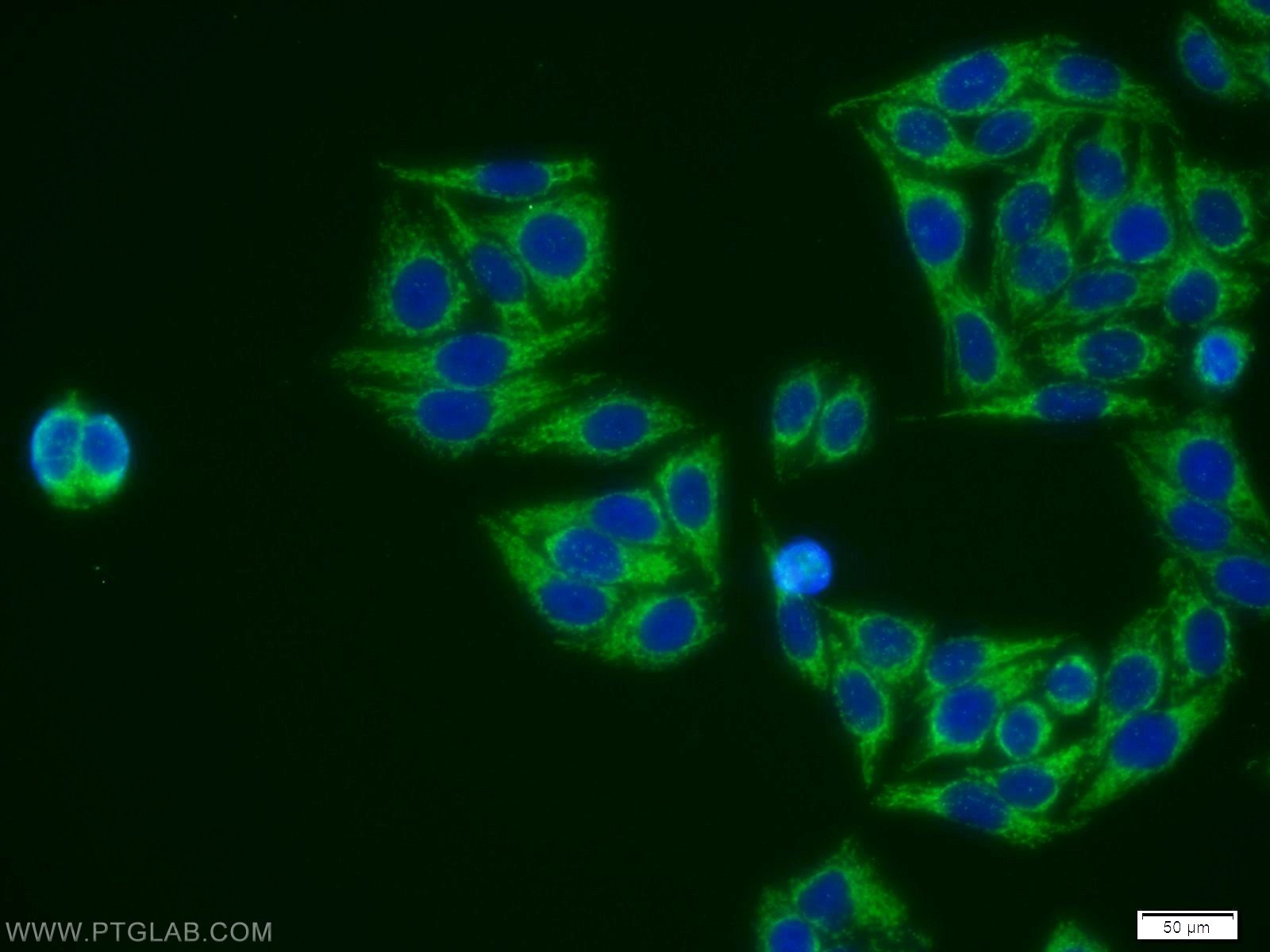EID1 Polyklonaler Antikörper
EID1 Polyklonal Antikörper für WB, IHC, IF/ICC, ELISA
Wirt / Isotyp
Kaninchen / IgG
Getestete Reaktivität
human
Anwendung
WB, IHC, IF/ICC, ELISA
Konjugation
Unkonjugiert
Kat-Nr. : 11734-1-AP
Synonyme
Galerie der Validierungsdaten
Geprüfte Anwendungen
| Erfolgreiche Detektion in WB | HT-1080.Zellen, U-937-Zellen |
| Erfolgreiche Detektion in IHC | humanes Mammakarzinomgewebe Hinweis: Antigendemaskierung mit TE-Puffer pH 9,0 empfohlen. (*) Wahlweise kann die Antigendemaskierung auch mit Citratpuffer pH 6,0 erfolgen. |
| Erfolgreiche Detektion in IF/ICC | HepG2-Zellen |
Empfohlene Verdünnung
| Anwendung | Verdünnung |
|---|---|
| Western Blot (WB) | WB : 1:500-1:1000 |
| Immunhistochemie (IHC) | IHC : 1:20-1:200 |
| Immunfluoreszenz (IF)/ICC | IF/ICC : 1:10-1:100 |
| It is recommended that this reagent should be titrated in each testing system to obtain optimal results. | |
| Sample-dependent, check data in validation data gallery | |
Veröffentlichte Anwendungen
| WB | See 3 publications below |
| IHC | See 1 publications below |
Produktinformation
11734-1-AP bindet in WB, IHC, IF/ICC, ELISA EID1 und zeigt Reaktivität mit human
| Getestete Reaktivität | human |
| In Publikationen genannte Reaktivität | human |
| Wirt / Isotyp | Kaninchen / IgG |
| Klonalität | Polyklonal |
| Typ | Antikörper |
| Immunogen | EID1 fusion protein Ag2336 |
| Vollständiger Name | EP300 interacting inhibitor of differentiation 1 |
| Berechnetes Molekulargewicht | 187 aa, 21 kDa |
| Beobachtetes Molekulargewicht | 20-30 kDa |
| GenBank-Zugangsnummer | BC024151 |
| Gene symbol | EID1 |
| Gene ID (NCBI) | 23741 |
| Konjugation | Unkonjugiert |
| Form | Liquid |
| Reinigungsmethode | Antigen-Affinitätsreinigung |
| Lagerungspuffer | PBS mit 0.02% Natriumazid und 50% Glycerin pH 7.3. |
| Lagerungsbedingungen | Bei -20°C lagern. Nach dem Versand ein Jahr lang stabil Aliquotieren ist bei -20oC Lagerung nicht notwendig. 20ul Größen enthalten 0,1% BSA. |
Hintergrundinformationen
EID1(EP300 interacting inhibitor of differentiation 1) is a member of the EID protein family, which regulates differentiation, transcription and acetyltransferase activity. EID1 function was originally identified as a transcriptional repressor which regulates cell cycle and differentiation, and leads to genome inactivation and instability by interacting with E3 ubiquitin ligase MDM2. EID1 is mainly located in the cytoplasm. It was translocated into the nuclei under stressed or pathological conditions such as AD patients and APP Tg mice brains.(PMID: 22186421, PMID: 31381951,PMID: 30926163).
Protokolle
| Produktspezifische Protokolle | |
|---|---|
| WB protocol for EID1 antibody 11734-1-AP | Protokoll herunterladen |
| IHC protocol for EID1 antibody 11734-1-AP | Protokoll herunterladen |
| IF protocol for EID1 antibody 11734-1-AP | Protokoll herunterladen |
| Standard-Protokolle | |
|---|---|
| Klicken Sie hier, um unsere Standardprotokolle anzuzeigen |
Publikationen
| Species | Application | Title |
|---|---|---|
Proc Natl Acad Sci U S A A comprehensive method for detecting ubiquitinated substrates using TR-TUBE. | ||
Mol Cell Proteomics Quantitative proteomic analysis of cellular protein modulation upon inhibition of the NEDD8-activating enzyme by MLN4924. | ||
Folia Histochem Cytobiol EID1 plays a protective role in early-onset pre-eclampsia via promoting proliferation and invasion in trophoblast cells. |





